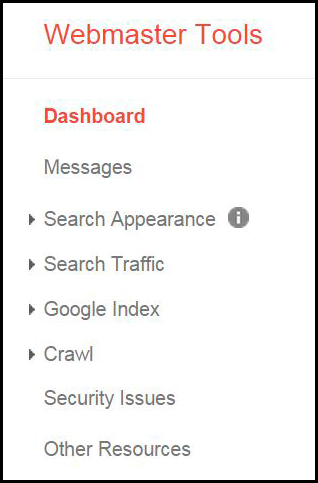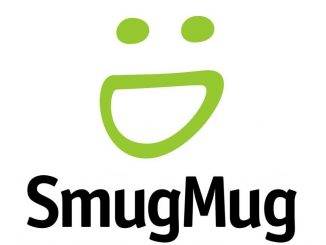
Markup ALL Things
Having your image content optimized is definitely step one, but if your desired search engine never finds your content you will never establish your place in the organic search results. Schema and image sitemaps are the best tools at your disposal to ensure Google and the others (Bing & Yahoo) effectively and efficiently index and understand as much about your masterpieces as possible.
Also read our 10 top SEO tips for photography websites
Schema.org was a joint effort of the three major search engines; Google, Bing, and Yahoo as a way of creating a cohesive way of describing your online assets. Schema.org is broken down into categories called Schemas, giving you the ability to call out certain pieces of information such as people and personal information, Business information, or reviews on products or services.
The benefit to Schema.org is that it allows search engines a more dynamic way of understanding your content and information where comprehension is otherwise difficult.
For all intents and purposes you can use schema.org to markup many aspects of your website so there is some merit in additional research, however, right now we are going to focus on ImageObject schema.
As mentioned above, Google and the other search engines have yet to find an accurate way of interpreting image and video content as it has no way of viewing it as we see it. This fact continues to drive home the need to include as much information about your image content as possible to somewhat remove as much of the guesswork on Google’s part. Here is an example of ImageObject schema:
<divitemscope itemtype=”http://schema.org/ImageObject“>
<h2 itemprop=”name”>%%Title%%</h2>
<img src=”https://www.apogeephoto.com/wp-content/uploads/2016/may2015/%%Image URL%%” itemprop=”contentURL” />
<span itemprop=”author”>%%Author Name%%</span>
<span itemprop=”contentLocation”>%%Location%%</span>
<meta itemprop=”datePublished”content=”%%Original Publish Date%%“>
<span itemprop=”description”>%%Alt Text%%</span>
</div>
Utilizing ImageObject schema gives us the ability to call out interesting pieces of information to the search engines that we otherwise would not be available through simply implementing it through HTML alone as shown at the top of the article.
As you can see from the example above we have the ability to callout info such as image author, locations where an image was created or taken, and the publish date; however, if you check out the complete roster of ImageObject variables, the sheer scale of info-types will probably astound you.
Used properly, schema.org will give you the versatility to implement data such as content rating, its target audience, any characters within the piece, any contributors to your works, and the copyright holder and year.
Schema.org might appear daunting, and yes there will be somewhat of a learning curve, however once you understand the formatting and how it’s supposed to be formatted, it’s really not that difficult. Feel free to re-use the example above and add new itemprop lines for new variables you may want to call out. Here are some great resources to get you started with Schema.org:
Schema.org: Ground Zero for Schema. Explore the available Schemas and see what you can use to augment your website
Microdata Generator: A Powerful Schema.org generator for most of the more popular Schemas
Google Microdata Testing Tool: Google’s own markup testing tool will show how the search engine interprets the schema and whether there are any issues
Notepad++: Easy to use, freeware program that helps with formatting your schema code
Map Out Your Content
A sitemap is a document that you can upload via your Google Webmaster Tools portal that shows the location of all assets on your website from images, videos, and webpages. An image sitemap is essentially a complete catalogue of all image content across your website which you can then upload to Google, which has shown to greatly increase the likelihood that you images will be found within Google’s image search.
Without any kind of image sitemap in place, you are essentially just hoping that Google finds your content buried somewhere within your website. See the example below:
<?xml version=”1.0″ encoding=”UTF-8″?>
<urlset xmlns=”http://www.sitemaps.org/schemas/sitemap/0.9″
xmlns:image=”http://www.google.com/schemas/sitemap-image/1.1″>
<url>
<loc>http://example.com/sample.html</loc>
<image:image>
<image:loc>http://example.com/image.jpg</image:loc>
</image:image>
<image:image>
<image:loc>http://example.com/photo.jpg</image:loc>
</image:image>
</url>
</urlset>

If your website is running on the WordPress platform, you are in luck, as there are countless plugins that will create and dynamically manage your image sitemaps; meaning little work, aside from ensuring the plugin is installed correctly, is required to put this in place.
If you’re not running WordPress, then the solution may be more difficult. In that case, you will need to contact your web developer (if you have one) or the vendor that manages your website to enquire about putting this in place.
Once you have an image sitemap, submitting to webmaster tools couldn’t be easier. When logged in to Webmaster Tools, select Crawl -> Sitemaps. From there hit the big red button that reads Add/Test Sitemap, and direct it to the URL of your desired sitemap. Once submitted, Google will re-crawl them on a regular basis for any changes or additions that may have been posted on your website.
At the end of the day, all we want is more visibility for our content. In order to promote our content through an organic search we must ensure that Google crawls, indexes and revisits our website as frequently as possible; The use of sitemaps are a crucial piece to that process.
Also read our 10 easy SEO for photographers tips
by Todd Mumford, Riverbed Marketing
Article: © 2015 Todd Mumford. All rights reserved.




Oh, thanks for these tips.